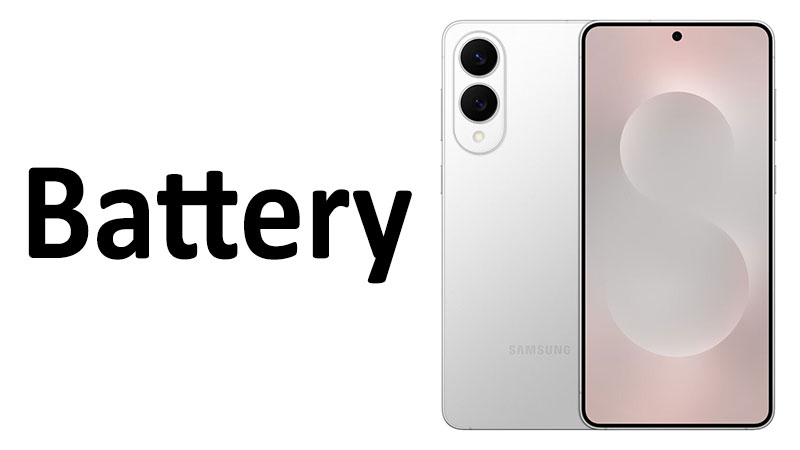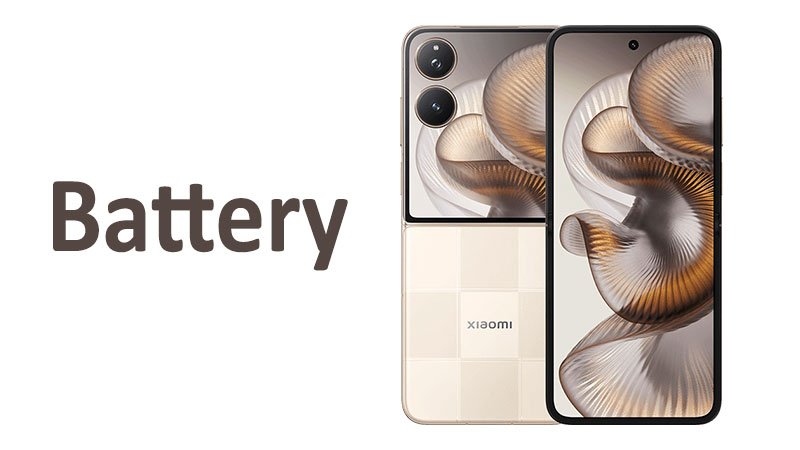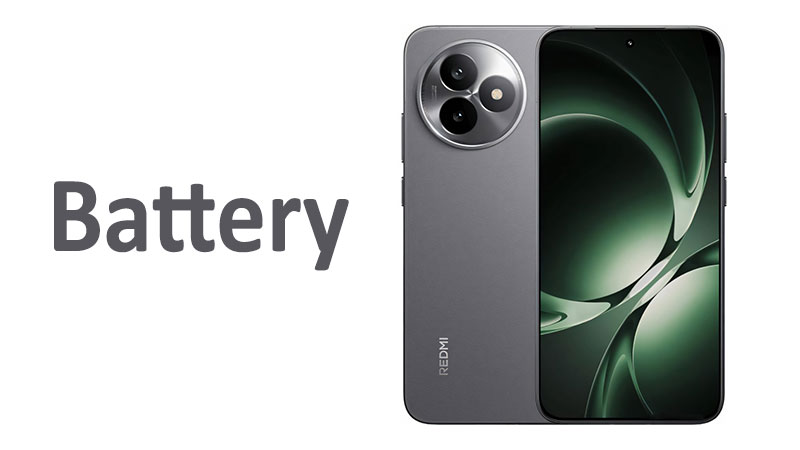The Samsung Galaxy S25 Edge battery immediately captures attention. It represents a crucial component of this flagship device. Battery technology is often the most important factor for daily usability. A powerful phone needs reliable power to function. This comprehensive article delves into every facet of the Samsung Galaxy S25 Edge battery. We will explore its capacity, charging capabilities, and expected real-world life. We aim to provide a detailed, SEO-optimized guide for buyers and enthusiasts alike. Understanding these specifications is vital for an informed purchase decision.
Deep Dive into the Samsung Galaxy S25 Edge Battery Capacity
The foundational element of the Samsung Galaxy S25 Edge battery is its capacity. The device utilizes a Lithium-Ion (Li-Ion) cell. Its specified capacity is 3900 mAh. This number is central to predicting the phone’s operational lifespan. Capacity directly impacts how long the phone stays powered between charges. Manufacturers must balance this capacity with the phone’s physical size. The 3900 mAh cell shows Samsung’s continued focus on slim design and weight.
Analyzing the 3900 mAh Cell
The 3900 mAh cell employs Li-Ion technology. This is the industry standard for modern smartphones. Li-Ion batteries offer a great balance of energy density and longevity. They are safe and provide consistent power output. The exact physical configuration of the cell is important. Samsung must pack this power efficiently into the S25 Edge’s slim frame. The 3900 mAh capacity is a measure of electrical charge storage. A higher number generally means better endurance.
However, capacity is only one part of the battery life equation. The phone’s internal efficiency also plays a major role. The processor, screen technology, and software optimization all matter. Samsung engineers must fine-tune the S25 Edge hardware. This ensures the best possible performance from the 3900 mAh battery. Optimization turns raw capacity into tangible screen-on time for the user. Therefore, the 3900 mAh specification is a starting point, not the final word on battery life.
Capacity Comparison: S25 Edge vs. Key Competitors
Comparing the Samsung Galaxy S25 Edge battery to its predecessor is essential. The previous generation, like the Galaxy S24, may have featured similar battery sizes. The S25 Edge’s 3900 mAh figure is consistent with the smaller flagship models. Apple’s competing devices often feature slightly lower nominal capacity. However, they achieve competitive battery life through superior software efficiency. This highlights the capacity-efficiency trade-off in the market.
In the Android landscape, many rivals offer much larger capacities. Some competitors push capacities well over 5000 mAh. These larger batteries come at the cost of thickness and weight. The S25 Edge capacity prioritizes a sleeker form factor. Therefore, the 3900 mAh battery comparison is complex. It involves balancing power against design aesthetics. Buyers who prioritize portability will appreciate the 3900 mAh choice. Those who seek maximum endurance might look elsewhere in the Samsung lineup. This capacity represents a design philosophy.
The Buyer’s Perspective on Capacity
A buyer must consider their individual usage habits. A casual user who mostly browses social media will find the 3900 mAh sufficient. Heavy gamers or power users might experience mid-day depletion. The S25 Edge battery capacity is adequate for a full day of mixed use. However, it may not stretch into a second day without a recharge. This is a critical point for potential owners.
Understanding this capacity helps set realistic expectations. It is vital for managing charging cycles. For example, using power-hungry applications will drain the battery faster. The user should expect to top up the phone before a long evening out. This battery size is a middle-ground solution. It appeals to users who value a compact and easy-to-handle device. The 3900 mAh battery size is a known quantity in the flagship space. It is reliable but not groundbreaking in size.
Mastering the Charging Speed: 25W Wired Power Delivery
The charging speed specifications for the Samsung Galaxy S25 Edge battery are clear. The device supports 25W wired fast charging. This is enabled through Power Delivery (PD) and Quick Charge 2.0 (QC2.0) protocols. Fast charging has become an expected feature in premium smartphones. The speed at which you can recharge defines convenience. Samsung has maintained this charging wattage across several generations. This consistency is a notable feature.
Breakdown of 25W Charging Technology
The 25W charging utilizes standardized protocols. Power Delivery, or PD, is an open industry standard. It ensures broad compatibility with various chargers and cables. This is an important convenience feature for users. Quick Charge 2.0 (QC2.0) is a proprietary standard from Qualcomm. Its inclusion provides backward compatibility with older fast chargers. The combination of PD and QC2.0 makes charging flexible. Users can use almost any standard fast charger with the S25 Edge.
The 25W figure represents the maximum power draw. The phone controls the actual power delivered to the battery. This control is critical for battery health and safety. The charging process is dynamic. It starts fast and slows down as the battery fills. This method prevents overheating and prolongs the lifespan of the 3900 mAh cell. The 25W is a balanced approach to speed and longevity. It offers a respectable charge rate without excessive heat generation.
Real-World Charging Performance Analysis
The specification claims 55% charge in 30 minutes. This provides a tangible measure of the 25W system’s efficiency. Achieving over half a charge in a half-hour is very practical. This speed is ideal for quick top-ups during the day. For instance, a 15-minute charge can restore many hours of basic usage. This quick recovery minimizes the inconvenience of a low battery.
This charging performance is a major selling point. It addresses the common anxiety of running out of power. The 55% figure is generally measured from a completely drained state. The actual time to reach a full 100% will be longer. Charging speed significantly decreases after reaching 80%. This is a standard practice for preserving battery health. The initial 30 minutes are the most impactful. They offer the greatest return on charging time investment.
Comparison with Competitor Charging Speeds
The 25W charging rate is a key area of debate. Many direct Android competitors offer significantly faster speeds. Some rival brands provide 65W, 80W, or even 120W charging. These ultra-fast systems can fully charge a battery in under 20 minutes. Therefore, Samsung’s 25W can seem slow in comparison. The gap in peak charging speed is substantial. This is a crucial point for users transitioning from faster charging ecosystems.
However, Samsung defends its choice based on safety and longevity. Higher wattages generate more heat during charging. This heat accelerates battery degradation over time. By limiting the power to 25W, Samsung prioritizes long-term battery health. The 25W wired charging is a conservative strategy. It balances acceptable speed with maximum lifespan for the 3900 mAh battery. Consumers must decide if a longer lifespan is worth the trade-off in charging time.
Pros and Cons of the 25W Approach
There are clear advantages and disadvantages to the 25W system.
Pros of 25W Wired Charging:
- It ensures better long-term battery health. Lower heat generation reduces cell degradation.
- The system offers wide compatibility. Users can easily find PD and QC2.0 compliant chargers.
- It provides a highly useful quick top-up. Charging to 55% in 30 minutes is sufficient for most emergencies.
- The technology is stable and widely deployed by Samsung. This means reliable performance.
Cons of 25W Wired Charging:
- It is slower than many competitor flagships. Users must wait longer for a full charge.
- The time from 80% to 100% is slow. This is a necessity but can feel tedious.
- It may disappoint power users. They expect the absolute fastest technology in a premium phone.
The 25W choice is a calculated decision by Samsung. It emphasizes a user-friendly and durable charging experience.
Wireless Freedom: 15W Charging and Qi2 Readiness
The Samsung Galaxy S25 Edge battery also supports wireless charging. The device features 15W wireless charging capability. This provides a convenient, cable-free way to power the phone. Wireless charging is a premium feature expected in all high-end smartphones. The 15W rate is respectable for a wireless standard. It offers a convenient alternative to the 25W wired connection.
Exploring the 15W Wireless Standard
The 15W wireless charging speed is a balanced specification. Wireless charging is inherently less efficient than wired charging. Some power is always lost as heat during transmission. The 15W rate is fast enough for overnight charging or desk top-ups. It is not intended for the quick boost provided by the 25W wired connection. This lower power limit also helps manage heat generation.
The 15W speed ensures the device remains cool during charging. This is important for the longevity of the 3900 mAh battery. Wireless charging offers unparalleled convenience. Placing the phone on a pad eliminates the need to plug in a cable. This ease of use often outweighs the slower charging speed for many users. The 15W rate is a standard that many accessory makers support.
The Significance of Qi2 Readiness
A crucial specification is the Qi2 Ready designation. Qi2 is the latest wireless charging standard. It builds upon the existing Qi standard. The Qi2 designation implies magnetic alignment technology. This alignment ensures the phone is perfectly positioned on the charging pad. Proper positioning maximizes efficiency and speed. It prevents inefficient charging due to misalignment.
The magnetic alignment feature is a major quality-of-life improvement. It makes wireless charging more reliable and faster in practice. The Qi2 standard also prepares the S25 Edge for future wireless accessories. This future-proofing is a significant advantage for the buyer. It means the phone will work seamlessly with upcoming magnetic chargers. The Qi2 readiness suggests a commitment to the latest wireless technology standards. It brings the S25 Edge wireless experience in line with other major industry players.
Wireless Charging Pros and Cons
Wireless charging on the S25 Edge has its own set of trade-offs.
Pros of 15W Wireless Charging and Qi2:
- It provides maximum convenience. You simply place the phone on a pad to charge.
- The 15W rate is fast enough for passive charging. This is suitable for overnight use or desk charging.
- Qi2 readiness ensures perfect magnetic alignment. This improves both efficiency and reliability.
- It reduces wear and tear on the wired charging port.
Cons of 15W Wireless Charging and Qi2:
- The 15W speed is significantly slower than 25W wired. It is not suitable for a quick power boost.
- The user cannot use the phone comfortably while it charges. This is a common limitation of wireless pads.
- Wireless chargers are sold separately. This adds an extra cost to the overall purchase.
- It generates more heat compared to wired charging at the same wattage.
The 15W wireless charging is a strong complementary feature. It is designed to enhance the overall user experience. It works alongside the 25W wired charging to offer comprehensive power solutions.
Longevity and Optimization: Maximizing Samsung Galaxy S25 Edge Battery Life
The actual Samsung Galaxy S25 Edge battery life extends beyond the 3900 mAh number. The phone’s endurance depends heavily on software and hardware optimization. Samsung employs sophisticated techniques to manage power consumption. These methods ensure that the phone’s components work efficiently. A well-optimized phone can last longer than a poorly optimized one with a larger battery.
Software Optimization and AI Integration
Samsung’s custom software, One UI, plays a critical role. It includes advanced power-saving features. The software actively monitors application usage. It puts seldom-used apps into a deep sleep state. This prevents background drainage of the 3900 mAh battery. The system intelligently learns the user’s patterns. It then optimizes resource allocation accordingly.
Furthermore, artificial intelligence (AI) is integral to optimization. The AI identifies power-hungry tasks. It automatically adjusts performance limits during these activities. This balancing act maintains smooth user experience while conserving power. The AI can also predict when the user is likely to charge the phone. It then paces the charging speed for maximum longevity. This intelligent management maximizes the effective S25 Edge battery life. It ensures every milliamp-hour is used efficiently.
Expected Screen-On-Time Performance
The screen is the single largest power consumer. The expected screen-on-time (SOT) is the best measure of real-world endurance. Given the 3900 mAh capacity, the S25 Edge is likely to achieve respectable SOT figures. Under typical mixed usage, users can expect six to seven hours of SOT. This is based on comparable performance metrics of previous Samsung models.
Usage patterns heavily influence this metric. Continuous video streaming will consume less power than intense mobile gaming. The adaptive display refresh rate also saves power. The phone can drop the refresh rate to conserve battery during static viewing. This dynamic adjustment is a major factor in achieving competitive SOT. Users should expect a full day of use from morning to night.
Battery Health and Degradation Management
Samsung implements various features to manage battery health. These tools are crucial for preserving the long-term capacity. All Li-Ion batteries degrade over time. Their ability to hold a charge diminishes with use. Samsung’s software includes protective measures against this natural decline.
One key feature is the charging limit option. Users can set the phone to stop charging at 85%. This practice is widely known to slow degradation. Keeping the battery away from 100% capacity prolongs its life. The 25W charging speed itself is also a management tool. Its moderate wattage generates less thermal stress. The phone’s cooling system further helps dissipate heat during intensive charging or use. These combined strategies ensure the S25 Edge battery maintains its capacity for a longer period.
Essential Considerations for the Potential Buyer
When purchasing the Samsung Galaxy S25 Edge, the battery system deserves careful thought. The specifications provided are technical. However, they translate directly into daily user experience. A buyer must weigh the trade-offs Samsung has chosen. This system offers a balance of size, speed, and safety.
Key Takeaways on Capacity and Endurance
The 3900 mAh capacity is a commitment to design. It provides solid, but not exceptional, endurance. Buyers should see it as a full-day battery solution. It is perfect for those who value a slim, lightweight device. Users coming from large battery phones should adjust their expectations. The excellent software optimization compensates for the capacity. However, it cannot perform miracles under continuous heavy load. The S25 Edge prioritizes form factor over raw battery size.
Understanding Charging Standards
The 25W wired charging is a deliberate choice for longevity. It is crucial for buyers to understand this. While other phones boast faster charging, Samsung aims for durability. The 55% charge in 30 minutes is the key metric. It provides the necessary quick boost when time is short. The included support for PD and QC2.0 means charger availability is never an issue. This standardization is a practical advantage for travelers.
Specialized Comparisons: The Efficiency Argument
The true specialized comparison lies in efficiency. The S25 Edge must compete on performance per milliamp-hour. Its efficiency is likely to surpass older models due to a new, power-sipping processor. This efficiency makes the 3900 mAh battery feel larger than it is. The phone’s display also contributes to this efficiency. Modern OLED panels are incredibly power-efficient. The combination of efficient hardware and optimized software is Samsung’s winning formula. This efficiency argument makes the S25 Edge battery a competitive choice. It is a more nuanced advantage than simply having a massive capacity.
Conclusion
The Samsung Galaxy S25 Edge battery specifications reveal a measured approach. Samsung continues to prioritize a holistic user experience. The 3900 mAh Li-Ion cell provides reliable, full-day power. This capacity is perfectly suited for the phone’s intended slim form factor. It balances power with portability effectively.
The charging solutions are robust and safety-focused. The 25W wired charging is a commitment to long-term battery health. Achieving 55% charge in 30 minutes offers practical, real-world quickness. This is highly beneficial for busy users needing a fast top-up. Furthermore, the 15W wireless charging provides excellent convenience. Its Qi2 readiness future-proofs the device for upcoming magnetic accessories.
The S25 Edge battery life is ultimately a story of optimization. Samsung’s hardware and software work together to maximize endurance. AI-driven power management ensures every milliamp-hour counts. Buyers should be confident in the S25 Edge’s endurance for everyday tasks. While it does not boast the fastest charging speeds on the market, it offers the safest and most reliable battery system. The S25 Edge is an informed choice for the long-term user. It delivers a superior balance of design, convenience, and battery longevity.
Frequently Asked Questions (FAQ)
What is the exact capacity of the Samsung Galaxy S25 Edge battery?
The Samsung Galaxy S25 Edge battery has a specified capacity of 3900 mAh. This is a standard Li-Ion cell size for the device’s compact form factor.
How fast is the wired fast charging on the Galaxy S25 Edge?
The Galaxy S25 Edge supports 25W wired fast charging. It can recharge the battery to approximately 55% capacity in just 30 minutes.
Does the Samsung Galaxy S25 Edge support wireless charging?
Yes, the phone supports 15W wireless charging. It is also designated as Qi2 Ready, which ensures magnetic alignment for better efficiency.
Will the 25W charging speed harm the S25 Edge battery over time?
No. The 25W speed is chosen specifically to minimize heat generation. This moderate wattage helps preserve the long-term health and lifespan of the 3900 mAh battery.
How does the 3900 mAh battery capacity translate to real-world battery life?
The 3900 mAh capacity, combined with advanced software optimization, provides full-day endurance. Users can generally expect six to seven hours of screen-on time under typical mixed usage.



